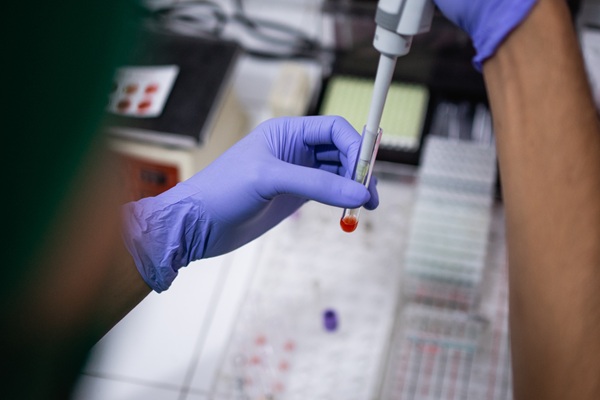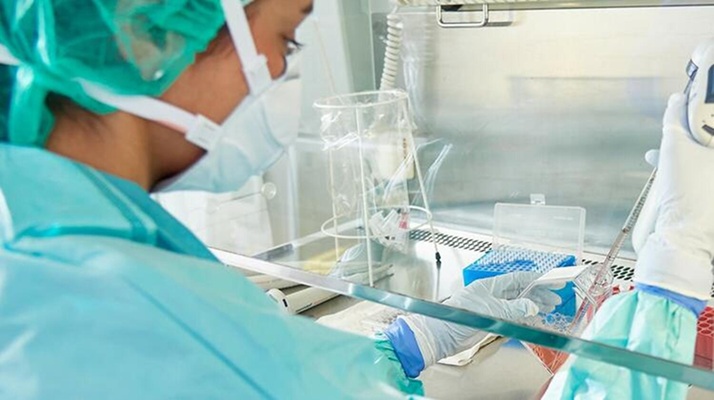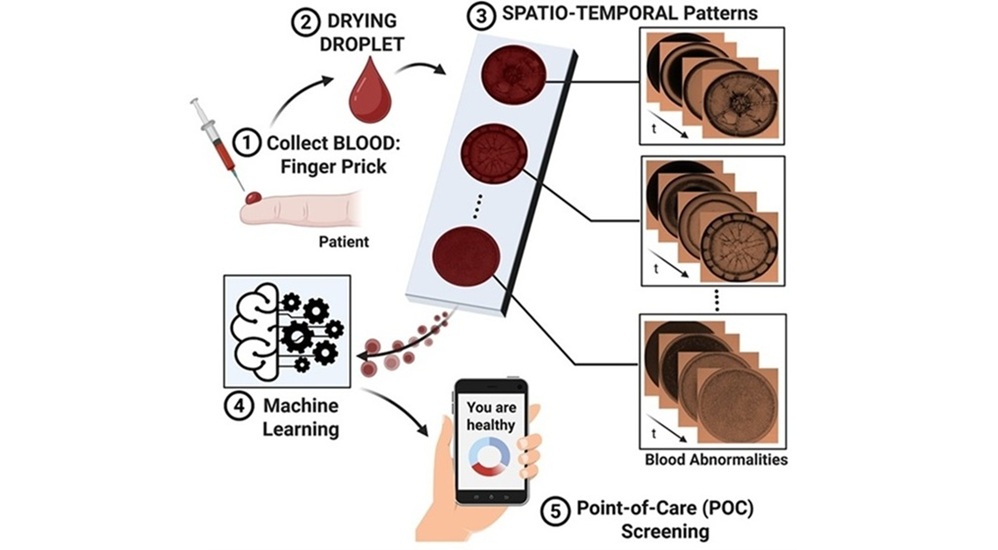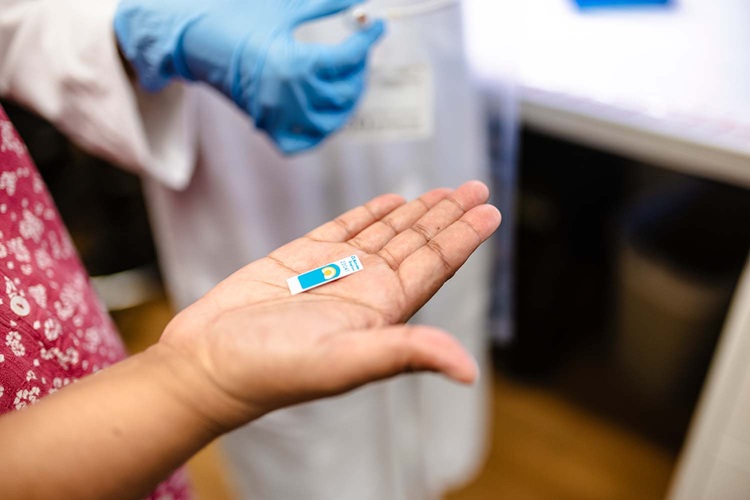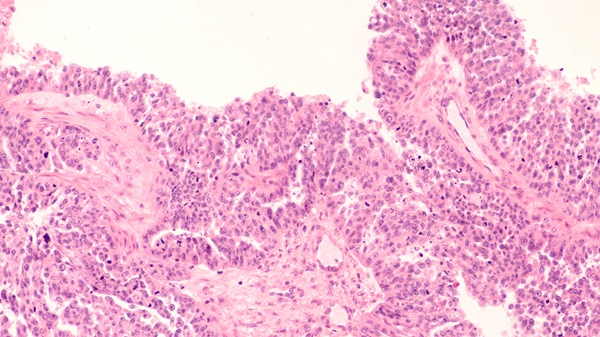Biomarker Signatures Predict Aging Health Quality
|
By LabMedica International staff writers Posted on 17 Jan 2017 |
A panel of 19 biomarkers in the blood was utilized to create molecular signatures that are able to predict how well an individual is aging and how severe the likelihood that he or she will develop an aging-related disease.
To establish these signatures, investigators at Boston University measured 19 blood biomarkers that included constituents of standard hematological measures, lipid biomarkers, and markers of inflammation and frailty in 4704 participants of the Long Life Family Study (LLFS). The biomarkers were selected based upon their noted quantitative change with age and specificity for inflammatory, hematological, metabolic, hormonal, or kidney functions.
The LLFS is a family-based study that enrolled 4935 participants including subjects and siblings (30%), their offspring (50%), and spouses (20%), with ages between 30 and 110 years. Approximately 40% of enrolled participants were born before 1935 and had a median age at enrollment of 90 years and 45% participants were male. Almost 55% of participants from the subject generation (birth year prior to 1935) have died since enrollment, with a median age at death of 96 years. Mortality in the generation born after 1935 is lower (3%) and among these few that have died, median age at death is currently 69 years.
The investigators used an agglomerative algorithm to analyze distribution of the 19 biomarkers and then grouped LLFS participants into clusters that yielded 26 different biomarker signatures.
To test whether these signatures were associated with differences in biological aging, the investigators correlated them with longitudinal changes in physiological functions and incident risk of cancer, cardiovascular disease, type II diabetes, and mortality using longitudinal data collected in the LLFS. One signature was found to be associated with significantly lower mortality, morbidity, and better physical function relative to the most common biomarker signature in LLFS, while nine other signatures were associated with less successful aging, characterized by higher risks for frailty, morbidity, and mortality.
"Many prediction and risk scores already exist for predicting specific diseases like heart disease," said first author Dr. Paola Sebastiani, professor of biostatistics at Boston University. "Here, though, we are taking another step by showing that particular patterns of groups of biomarkers can indicate how well a person is aging and his or her risk for specific age-related syndromes and diseases. These signatures depict differences in how people age, and they show promise in predicting healthy aging, changes in cognitive and physical function, survival, and age-related diseases like heart disease, stroke, type II diabetes, and cancer."
The study was published in the January 6, 2017, online edition of the journal Aging Cell.
To establish these signatures, investigators at Boston University measured 19 blood biomarkers that included constituents of standard hematological measures, lipid biomarkers, and markers of inflammation and frailty in 4704 participants of the Long Life Family Study (LLFS). The biomarkers were selected based upon their noted quantitative change with age and specificity for inflammatory, hematological, metabolic, hormonal, or kidney functions.
The LLFS is a family-based study that enrolled 4935 participants including subjects and siblings (30%), their offspring (50%), and spouses (20%), with ages between 30 and 110 years. Approximately 40% of enrolled participants were born before 1935 and had a median age at enrollment of 90 years and 45% participants were male. Almost 55% of participants from the subject generation (birth year prior to 1935) have died since enrollment, with a median age at death of 96 years. Mortality in the generation born after 1935 is lower (3%) and among these few that have died, median age at death is currently 69 years.
The investigators used an agglomerative algorithm to analyze distribution of the 19 biomarkers and then grouped LLFS participants into clusters that yielded 26 different biomarker signatures.
To test whether these signatures were associated with differences in biological aging, the investigators correlated them with longitudinal changes in physiological functions and incident risk of cancer, cardiovascular disease, type II diabetes, and mortality using longitudinal data collected in the LLFS. One signature was found to be associated with significantly lower mortality, morbidity, and better physical function relative to the most common biomarker signature in LLFS, while nine other signatures were associated with less successful aging, characterized by higher risks for frailty, morbidity, and mortality.
"Many prediction and risk scores already exist for predicting specific diseases like heart disease," said first author Dr. Paola Sebastiani, professor of biostatistics at Boston University. "Here, though, we are taking another step by showing that particular patterns of groups of biomarkers can indicate how well a person is aging and his or her risk for specific age-related syndromes and diseases. These signatures depict differences in how people age, and they show promise in predicting healthy aging, changes in cognitive and physical function, survival, and age-related diseases like heart disease, stroke, type II diabetes, and cancer."
The study was published in the January 6, 2017, online edition of the journal Aging Cell.
Latest Molecular Diagnostics News
- Simple Urine Test to Revolutionize Bladder Cancer Diagnosis and Treatment
- Blood Test to Enable Earlier and Simpler Detection of Liver Fibrosis
- Genetic Marker to Help Children with T-Cell Leukemia Avoid Unnecessary Chemotherapy
- Four-Gene Blood Test Rules Out Bacterial Lung Infection
- New PCR Test Improves Diagnostic Accuracy of Bacterial Vaginosis and Candida Vaginitis
- New Serum Marker-Editing Strategy to Improve Diagnosis of Neurological Diseases
- World’s First Genetic Type 1 Diabetes Risk Test Enables Early Detection
- Blood Test to Help Low-Risk Gastric Cancer Patients Avoid Unnecessary Surgery
- First-Of-Its-Kind Automated System Speeds Myeloma Diagnosis
- Blood Protein Profiles Predict Mortality Risk for Earlier Medical Intervention
- First Of Its Kind Blood Test Detects Gastric Cancer in Asymptomatic Patients
- Portable Molecular Test Detects STIs at POC in 15 Minutes
- Benchtop Analyzer Runs Chemistries, Immunoassays and Hematology in Single Device
- POC Bordetella Test Delivers PCR-Accurate Results in 15 Minutes
- Pinprick Blood Test Could Detect Disease 10 Years Before Symptoms Appear
- Refined C-Reactive Protein Cutoffs Help Assess Sepsis Risk in Preterm Babies
Channels
Clinical Chemistry
view channel
Chemical Imaging Probe Could Track and Treat Prostate Cancer
Prostate cancer remains a leading cause of illness and death among men, with many patients eventually developing resistance to standard hormone-blocking therapies. These drugs often lose effectiveness... Read more
Mismatch Between Two Common Kidney Function Tests Indicates Serious Health Problems
Creatinine has long been the standard for measuring kidney filtration, while cystatin C — a protein produced by all human cells — has been recommended as a complementary marker because it is influenced... Read moreHematology
view channel
Platelet Activity Blood Test in Middle Age Could Identify Early Alzheimer’s Risk
Early detection of Alzheimer’s disease remains one of the biggest unmet needs in neurology, particularly because the biological changes underlying the disorder begin decades before memory symptoms appear.... Read more
Microvesicles Measurement Could Detect Vascular Injury in Sickle Cell Disease Patients
Assessing disease severity in sickle cell disease (SCD) remains challenging, especially when trying to predict hemolysis, vascular injury, and risk of complications such as vaso-occlusive crises.... Read more
ADLM’s New Coagulation Testing Guidance to Improve Care for Patients on Blood Thinners
Direct oral anticoagulants (DOACs) are one of the most common types of blood thinners. Patients take them to prevent a host of complications that could arise from blood clotting, including stroke, deep... Read moreImmunology
view channel
New Test Distinguishes Vaccine-Induced False Positives from Active HIV Infection
Since HIV was identified in 1983, more than 91 million people have contracted the virus, and over 44 million have died from related causes. Today, nearly 40 million individuals worldwide live with HIV-1,... Read more
Gene Signature Test Predicts Response to Key Breast Cancer Treatment
DK4/6 inhibitors paired with hormone therapy have become a cornerstone treatment for advanced HR+/HER2– breast cancer, slowing tumor growth by blocking key proteins that drive cell division.... Read more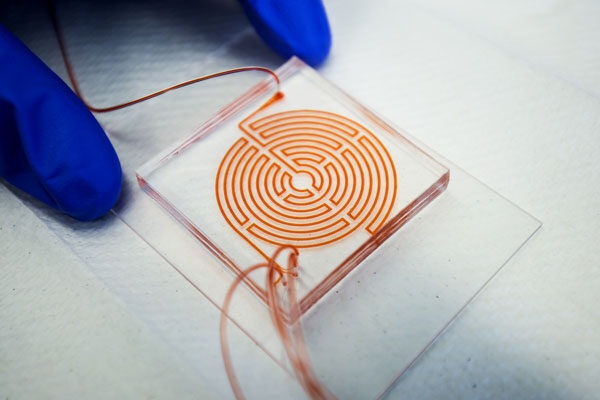
Chip Captures Cancer Cells from Blood to Help Select Right Breast Cancer Treatment
Ductal carcinoma in situ (DCIS) accounts for about a quarter of all breast cancer cases and generally carries a good prognosis. This non-invasive form of the disease may or may not become life-threatening.... Read moreMicrobiology
view channel
Rapid Diagnostic Test Matches Gold Standard for Sepsis Detection
Sepsis kills 11 million people worldwide every year and generates massive healthcare costs. In the USA and Europe alone, sepsis accounts for USD 100 billion in annual hospitalization expenses.... Read moreRapid POC Tuberculosis Test Provides Results Within 15 Minutes
Tuberculosis remains one of the world’s deadliest infectious diseases, and reducing new cases depends on identifying individuals with latent infection before it progresses. Current diagnostic tools often... Read more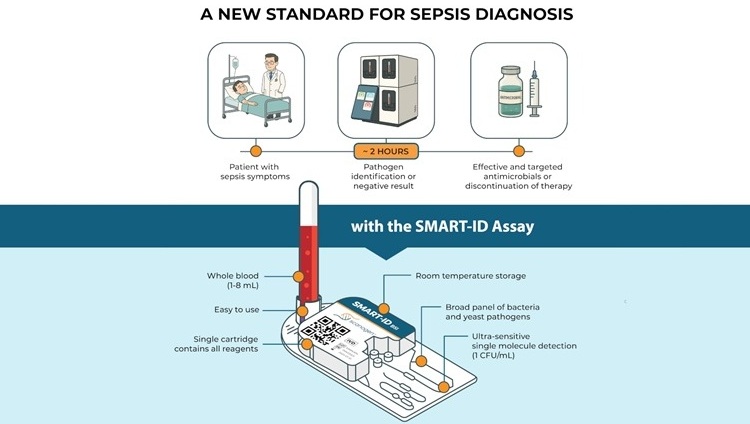
Rapid Assay Identifies Bloodstream Infection Pathogens Directly from Patient Samples
Bloodstream infections in sepsis progress quickly and demand rapid, precise diagnosis. Current blood-culture methods often take one to five days to identify the pathogen, leaving clinicians to treat blindly... Read morePathology
view channel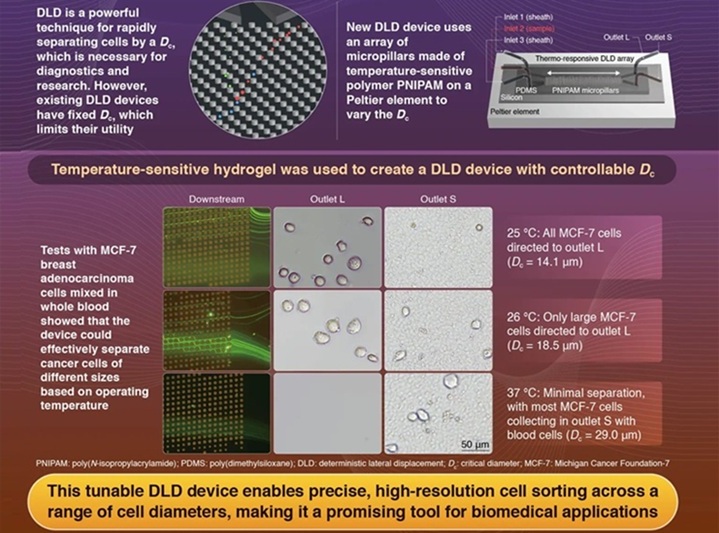
Tunable Cell-Sorting Device Holds Potential for Multiple Biomedical Applications
Isolating rare cancer cells from blood is essential for diagnosing metastasis and guiding treatment decisions, but remains technically challenging. Many existing techniques struggle to balance accuracy,... Read moreAI Tool Outperforms Doctors in Spotting Blood Cell Abnormalities
Diagnosing blood disorders depends on recognizing subtle abnormalities in cell size, shape, and structure, yet this process is slow, subjective, and requires years of expert training. Even specialists... Read moreTechnology
view channel
Artificial Intelligence Model Could Accelerate Rare Disease Diagnosis
Identifying which genetic variants actually cause disease remains one of the biggest challenges in genomic medicine. Each person carries tens of thousands of DNA changes, yet only a few meaningfully alter... Read more
AI Saliva Sensor Enables Early Detection of Head and Neck Cancer
Early detection of head and neck cancer remains difficult because the disease produces few or no symptoms in its earliest stages, and lesions often lie deep within the head or neck, where biopsy or endoscopy... Read moreIndustry
view channel
Abbott Acquires Cancer-Screening Company Exact Sciences
Abbott (Abbott Park, IL, USA) has entered into a definitive agreement to acquire Exact Sciences (Madison, WI, USA), enabling it to enter and lead in fast-growing cancer diagnostics segments.... Read more








 (3) (1).png)





